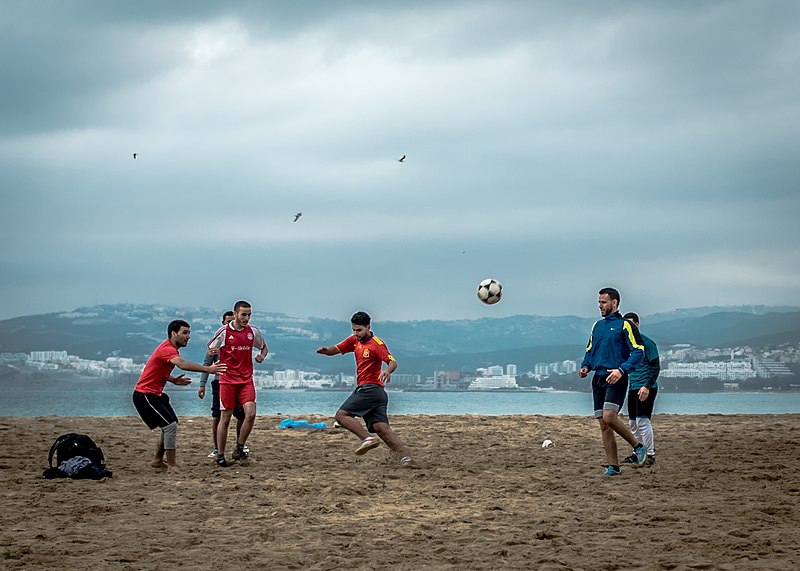6 Quirky Ways to Improve Your Grassroots Football Skills

If you’re playing in a local league, or even just with friends during the weekends, finding the time to work on your core football skills can be tough. Work and family commitments come first, so any opportunity to enhance your abilities should be embraced.
Fortunately, there are several ways to improve your game without the need to hit the training field and put in a formal session.
Here are six quirky and fairly simple ways to improve your football skills.
1. Football Golf
Football golf is an enjoyable way to enhance your football skills. The game activity combines the precision of golf with the skills of football. Thankfully, it’s relatively easy to set up and play.
Set Up a Course: Create a mini-golf course in your yard or garden, or at a nearby park. Use football cones or markers to mark the holes.
Rules of the Game: Similar to traditional golf, the objective is to get the football into each "hole" (cones or designated areas) with the fewest kicks possible. Keep track of your scores, and treat it like the final day of the US Masters!
Skill Development: Football golf improves your accuracy, control and finesse in passing and shooting. You'll also need to work on your ability to judge distances — perfect for improving your long-passing ability
Friendly Competition: Play with friends or family, and turn it into a friendly competition. The player with the lowest score at the end wins.
Variations: Add obstacles such as football mannequins to make it more interesting, like dribbling through cones before taking a shot.
2. Football Tennis
Football tennis — also known as football tennis or ‘futnet’ — is a fast-paced game that helps improve your ball control and agility.
Set Up: You can play football tennis indoors or outdoors — with a net or without one. Divide the playing area into two halves, like a tennis court.
Rules: Players take turns hitting the ball (football) over the net, using only their feet and head. The ball must clear the net and land in the opponent's half. Set up the court with football cones. And if you don’t have a net, push a couple of portable football goals together.
Skill Development: Football tennis enhances your footwork, balance and ability to make precise touches on the ball. It also improves your reaction time.
Scoring: Use traditional tennis scoring (15-30-40) or set a point limit. The player or team to reach that limit first wins.
3. Football Rebounders
Football rebounders are excellent tools for improving your passing, receiving and ball-control skills. Here's how to make the most of them:
Get a Rebounder: Invest in a football rebounder or set up a DIY version using a wall and a target area.
Passing Practice: Use the rebounder to practise your passing accuracy. Pass the ball against the rebounder and try to control the returning ball.
First Touch: Improve your first touch by receiving the ball from the rebounder. Work on controlling the ball with different parts of your body.
Vary the Angles: Change the angle and distance to simulate different game situations. This helps you develop adaptability on the pitch.
Consistent Practice: Dedicate regular sessions to rebounder drills to see significant improvements in your skills.
4. Tennis Ball Keep-Ups
Keep-ups, also known as juggling, involve controlling the ball using various parts of your body, such as your feet, thighs and head. All you need to do is keep going for as long as you can without letting the tennis ball touch the ground. Why do this? Because if you can master control with a tennis ball, imagine what your control will be like with a size 5 football!
Proper Footwear and Surface: Wear comfortable athletic shoes or play barefoot on a soft surface like grass to have better control over the tennis ball.
Get in Position: Stand with your feet shoulder-width apart and knees slightly bent. And keep your body relaxed.
Initial Touch: Drop the tennis ball from waist height onto the top of your dominant foot. Then just start your keep-ups in the normal way. Keep track of your best keep-up streaks to monitor your progress.
5. Foot Pool
Foot Pool combines elements of football and traditional pool, offering a fresh twist on both sports. Players get the opportunity to play a game of football on a pitch set up just like a pool table, ie. six pockets.
Game Mechanics: Foot Pool typically involves two players or teams challenging each other on a pool table pitch. The game begins with a draw to determine who starts. The first kick is made with a white ball, which acts as the cue ball. Make all the other balls a different colour. One idea is to go with reds and yellows. A full pack of 10 training footballs with red detailing, for instance, will do the job nicely!
Precision and Strategy: Foot Pool challenges players' precision and strategic thinking. Just like in a traditional pool game, players try to pot their coloured balls into the pockets. However, in Foot Pool, you use your feet to kick the balls instead of using a cue. Make the ‘pockets’ with football markers or cones.
Ball Control: Playing Foot Pool requires excellent ball control. Players need to accurately position themselves, calculate angles and use the right amount of force to kick the balls into the pockets. This precision helps improve ball control skills, which can be beneficial on the football field.
Translating Skills: The skills honed in Foot Pool, such as precise kicking and strategic thinking, can translate to improved performance on the football field. Enhanced ball control and accuracy in passing or shooting can give players an edge in matches.
Fun and Accessibility: Foot Pool offers a fun and accessible way to enjoy both football and pool. And it can be enjoyed by players of all ages and skill levels.
6. Barefoot Beach Kickabouts
Train on the beach without shoes to strengthen your foot muscles and improve your ability to play with finesse. The sandy surface adds resistance — making you more agile and developing your core and lower body strength.
Choose the Right Spot: Look for a flat, sandy area on the beach with enough space to practice comfortably. Avoid rocky, crowded or uneven terrain to prevent injuries.
Start Slow: Begin with gentle jogging or walking to acclimatise your feet to the sandy surface. As you get comfortable, progress to more challenging movements like dribbling.
Basic Ball Drills: Practice basic football drills like passing, dribbling and shooting with a football ball. Focus on precision and control while adjusting to the sand.
Sprint and Agility Drills: Incorporate sprinting and agility exercises to boost your footwork and speed. The sand's resistance will challenge your muscles, helping you become stronger, more balanced and more agile.
Balance Exercises: Perform balance drills such as standing on one foot or walking on tiptoes to improve stability.
Regular Practice: Consistency is key to reaping the benefits of barefoot beach kickabouts. Regular sessions will gradually strengthen your foot muscles and enhance your control.
In many cases, all you need is a ball when you’re honing your football skills away from the training pitch. Whether you’re out with family or taking a short break from work, make the whole world your training pitch, and you’ll become a better grassroots football player over time.

